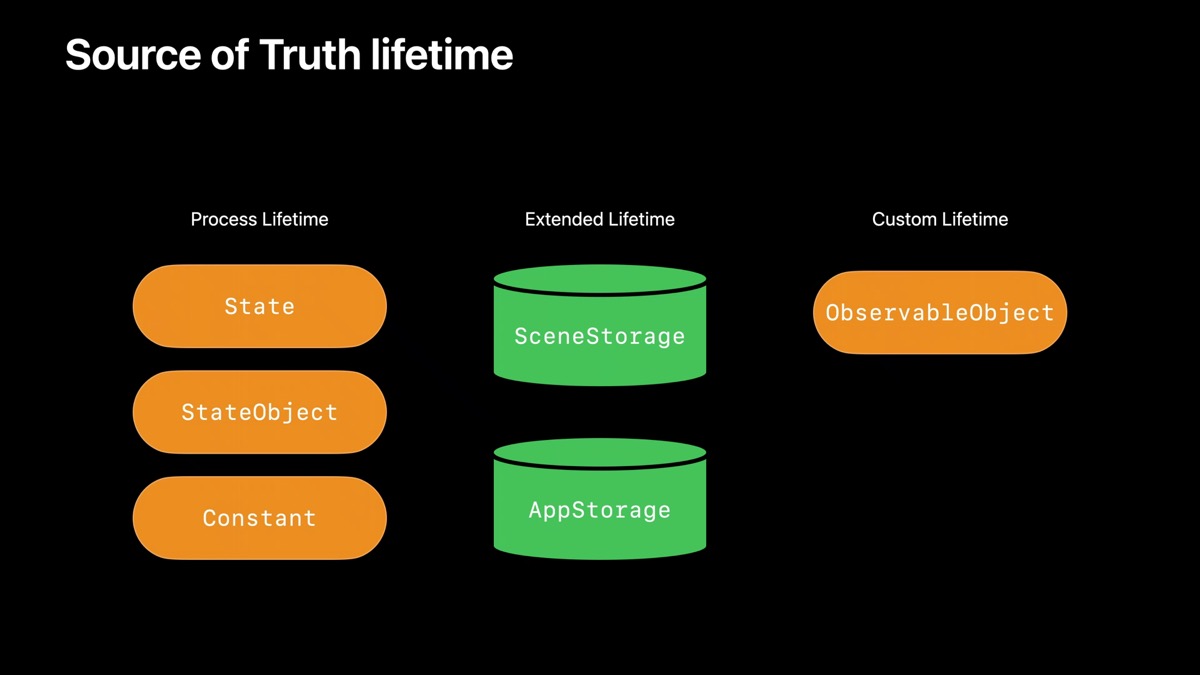WWDC 2020 has clarify much on how we should manage data flow when using SwiftUI.
I had a hard time understanding the role of StateObject, until I watched Session 10040: Data Essentials in SwiftUI.
The Apple documentation was also helped.
The right way to use
It is very important to know how to use the various components correctly.
I have been writing in SwfitUI 1.0, and now I know I have bugs. I have misused @ObservedObject.
Here are a few things to remind myself.
SwiftUI might create or recreate a view at any time,
View is a descriptor of the view, not like typical UIView. They are lightweight. It is unwise to override View.init. If you have anything to do with states and data objects, you do it using one of the state components provided.
The state is attached to the view by SwiftUI.
App Hierarchy: App -> Scene -> View
The most important decision is to decide where to store the truth.
Is it a global truth for the app, or across scenes, or is it for an individual view?
StateObject vs ObservedObject
One of the most common question is how to use these 2 correctly.
We initialise with @StateObject when we want the view/scene/app to hold on to the truth.
struct LibraryView: View {
@StateObject var book = Book() // Hold on to the 1 truth
var body: some View {
BookView(book: book) // Pass it to another view
}
}
We declare @ObservedObject, but never initialize it. When declared in a view, it becomes the view’s dependency. Some view higher up will have to pass to it. In this case, LibraryView pass the source of truth to BookView.
struct BookView: View {
@ObservedObject var book: Book // From external source
}
